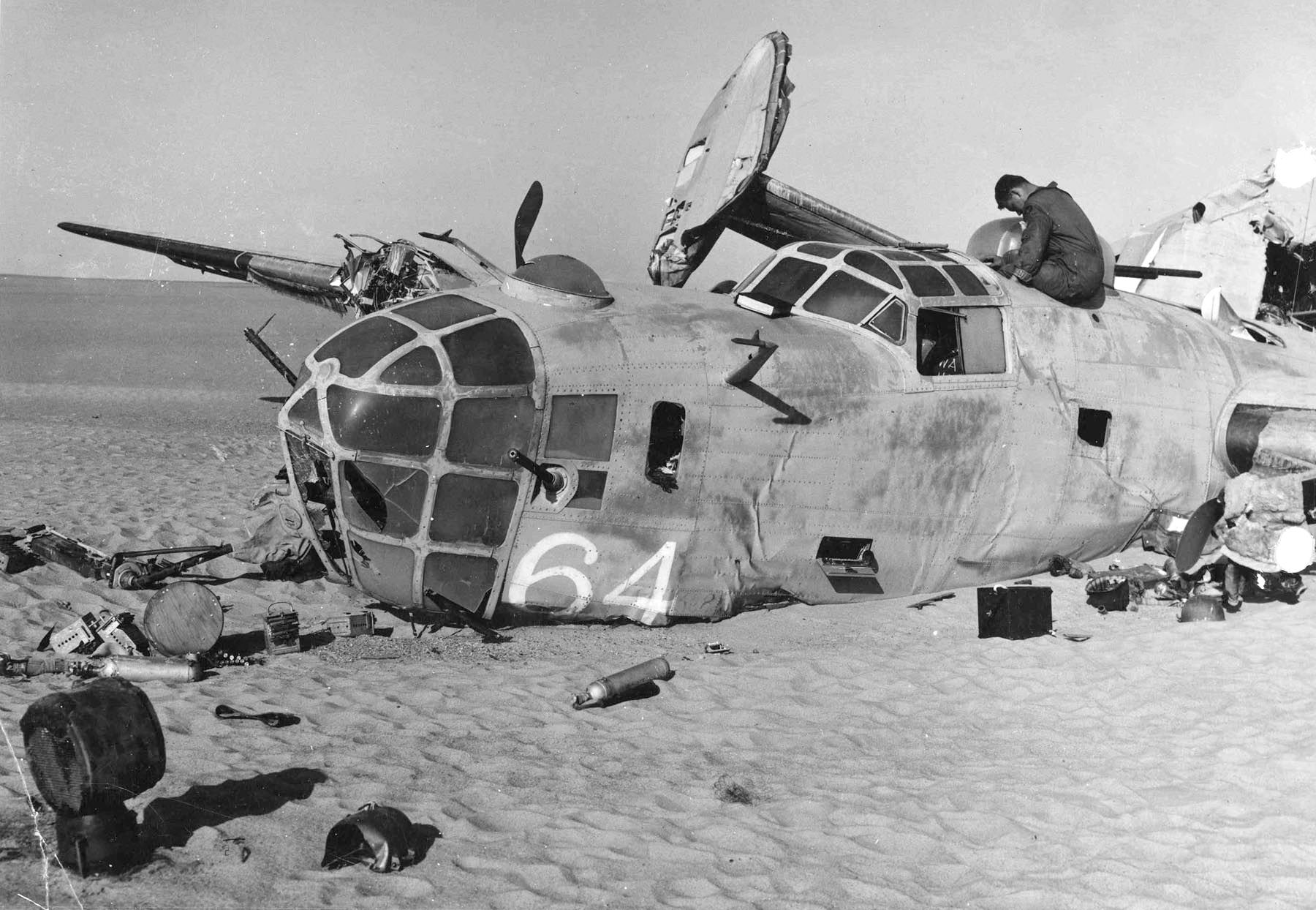were they all found together or did they all die in different places?
The first I had heard of this was in a book, "How to Build Dioramas" by Sheperd Paine. "Shep" Paine is a master modeler and did one of the LBG that is simply amazing:

I even found a link to the actual pages on Google Books. There was obviously a lot of modifications that he had to make to make it look the way it did post crash - there wasn't even a B-24D model available at the time. He had to modify a B-24J.
See it here.
There are quite a lot of links to LBG info:
http://www.ladybegood.com/
http://en.wikipedia.org/wiki/Lady_Be_Good_(aircraft)
http://www.ladybegood.net/
In answer to your question, there were discovered in a couple of different groups. The wreck was found in 1958 and the first bodies were discovered in 1960. In that group there were 5 bodies. Later that year, another body was found 26 miles further north (they realized they were in the desert and were making their way north to the coast). They also found another body about 20 miles north of him in that same search. One more body was found later in 1960 and it turned out to be the remains of the bombardier whose parachute did not open and died on impact. The diaries suggest three of the group (Guy Shelley, "Rip" Ripslinger and Vernon Moore), continued north leaving the 5 behind. They began to drop along the way and account for the two that were found north of the main group. The last of the tree, Moore, was never found and may have been buried by a British patrol before the discovery of the plane.
Rest in Peace, gentlemen.

The ill-fated crew of the Consolidated B-24D "Lady Be Good," from the left: 1Lt. W.J. Hatton, pilot; 2Lt. R.F. Toner, copilot; 2Lt. D.P. Hays, navigator; 2Lt. J.S. Woravka, bombardier; TSgt. H.J. Ripslinger, engineer; TSgt. R.E. LaMotte, radio operator; SSgt. G.E. Shelly, gunner; SSgt. V.L. Moore, gunner; and SSgt. S.E. Adams, gunner.
After discovery in 1960







